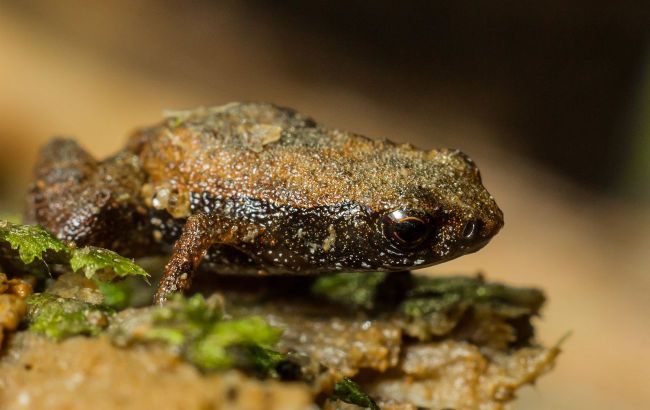World’s smallest frog challenges our understanding of nature
 What the world's smallest frog looks like (photo: flickr.com)
What the world's smallest frog looks like (photo: flickr.com)
Scientists have made an astonishing discovery — they found the smallest frog on the planet. This tiny creature has surprised researchers with its size, challenging all notions of nature's possible limits, according to The New York Times.
Measuring just 6.95 millimeters, this frog is so small that it could easily fit on the tip of a finger and is even smaller than some ant species. Despite its size resembling that of a cricket, it is not an insect but one of the smallest known vertebrates on Earth.
“We are talking about the limits of life-size on Earth,” said Luís Felipe Toledo, a herpetologist at the University of Campinas in Brazil.
Dr. Toledo and his colleagues described this smallest frog in the world, naming it Brachycephalus dacnis in honor of the Dacnis conservation project, which facilitated this discovery.
Toledo first suspected the existence of a miniature frog when a colleague shared some audio recordings of the sounds made by small frog species collected in the Brazilian Atlantic Forest. After listening to the recordings, he realized he was hearing something new.
“Oh, that’s actually two species that you have in your hands,” Dr. Toledo recalls saying.
The Brazilian Atlantic Forest is home to many frogs of the Brachycephalus genus, also known as “saddleback toads.” Their ability to jump distances up to 30 times their body length has earned them the nickname “flea toadlets.”
 The world's smallest frog (photo: Lucas Botelho)
The world's smallest frog (photo: Lucas Botelho)
Due to their miniature size, various Brachycephalus species look very similar, making it difficult to distinguish them based solely on appearance. However, their mating calls are quite specific, allowing females to identify males of their species easily.
According to Dr. Toledo, the mating call of B. dacnis is short, soft, and cheerful, often leading people to confuse it with a cricket.
DNA tests confirmed that B. dacnis is genetically distinct from other species. This makes it the seventh known species of flea frog and the second smallest vertebrate on Earth, following another Brachycephalus frog, which measures 6.5 millimeters.
Dr. Toledo noted that the difference is nearly invisible and depends on the available samples — it is entirely possible that a B. dacnis individual of the same size will be found in the future.
“There are untold numbers of unknown tiny frogs out there,” says Mark Scherz, curator of herpetology at the Natural History Museum of Denmark.
He added that finding these small species is extraordinarily challenging. The record for the smallest vertebrate previously belonged to the New Guinea frog Paedophryne amauensis (7 mm) and the freshwater dwarf goby (7.9 mm).

The world's smallest frog (photo: Lucas Botelho)
Dr. Toledo's team created high-resolution 3D scans of B. dacnis to understand how this frog maintains the anatomy typical of its species despite its miniature size.
Typically, frogs have four fingers on their hands and five on their feet; however, in B. dacnis, as well as in other miniature species, there are only two fingers on the hands and three on the feet, with parts of the inner ear absent.
Most Brachycephalus species have fused skull bones, but B. dacnis retains a skull structure similar to that of ordinary frogs. Unlike typical metamorphosis, where tadpoles hatch from eggs, B. dacnis lays only two eggs, from which fully formed frogs emerge.
Miniaturization makes these frogs vulnerable to small predators like ants and spiders, but it opens up new survival opportunities.
According to Jodi Rowley from the Australian Museum, miniaturization allows them to inhabit areas inaccessible to larger frogs, such as dense foliage filled with tiny food sources. Given the significant deforestation of the Atlantic Forest, studying such species could aid in their conservation.
“So much of our biodiversity, known and unknown, is small and camouflaged and, not surprisingly, often goes unnoticed,” Dr. Rowley said.

The world's smallest frog (photo: Lucas Botelho)

